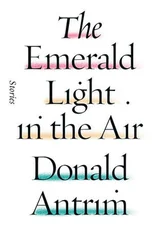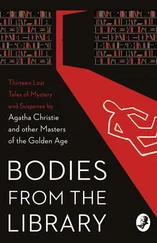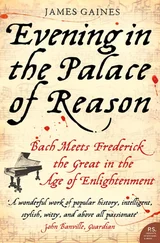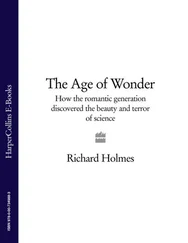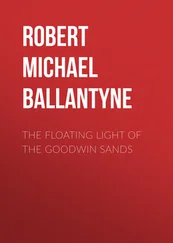An article about her time with Man Ray. With photos to match. Lee could tell the story again the way she’s always told it: “I met Man Ray in a bar on his way to Biarritz. I asked him if I could be his student and he told me he didn’t take students. So I told him I was going with him, and before the train pulled into Biarritz we were in love.” Tell it this way and it’s romantic, a fairy tale, and if you tell something enough times it becomes true, just the way a photograph can trick you into thinking it’s a memory. And why couldn’t it be true? Lee was beautiful enough then to get what she wanted exactly when she wanted it, and there are photos of her in Biarritz with Man, her head tipped back to catch the sun, skin creamy as the inside of a seashell. Lee could assemble an entire history from the photos that would tell any version of the story she wants. But back then, that first summer in Paris, she didn’t yet know the power of pictures, how a frame creates reality, how a photograph becomes memory becomes truth.
Or Lee could tell the real story: the one where she loved a man and he loved her, but in the end they took everything from each other—who can say who was more destroyed? It’s this story that she’s locked up tight inside herself, this story that she was thinking about when she hid all her old prints and negatives in the attic, this story that makes the delicate teacup tremble in her hands.
Lee takes a final swallow and sets the empty cup atop the pile in the sink. She calls to Janie, and together they carry the bombe Alaska to the table and set it in the middle of the group, and with a theatrical flourish, Lee pours the pitcher of rum over it and takes one of the long taper matches and sets it on fire, and the flames are instantaneous, hot and blue, rising up almost to the chandelier. Everyone gasps and claps loudly, and Lee forgets for a minute how sad Audrey has made her, just stands there and enjoys watching the alcohol burn.
After the cake is cut and everyone is served, Lee sits back down next to Audrey.
“When would you need it by?” Lee asks her, and watches as Audrey’s face moves from surprise to pleasure.
“I’d want to see a first draft by October.”
Lee nods. “I’ll do it,” she tells her. “But not his photos. Mine.”
Audrey rolls the stem of her wineglass between her fingers. “I can’t promise that. This is a story about Man Ray.”
But it’s not, Lee thinks. And that’s been the problem all along.
Paris
1929
The night Lee meets Man Ray begins in a half-empty bistro a few blocks from Lee’s hotel, where she sits alone, eating steak and scalloped potatoes and drinking half pitchers of dusky red wine. She is twenty-two, and beautiful. The steak tastes even better than she thought it would, swimming in a rich brown roux that pools on the plate and seeps into the layers of sliced potatoes and thick melted slabs of Gruyère.
Lee has passed the bistro many times since she arrived in Paris three months earlier, but—her finances being what they are—this is the first time she has ventured inside. Dining alone is nothing new: Lee has spent almost all her time alone since she got here, a hard adjustment after her busy life in New York City, where she modeled for Vogue and hit up the jazz clubs almost nightly, always with a different man on her arm. Back then, Lee took it for granted that everyone she met would be entranced by her: her father, Condé Nast, Edward Steichen, all the powerful men she had charmed over the years. Those men. She may have captivated them, but they took things from her—raked her over with their eyes, barked commands at her from under camera hoods, reduced her to pieces of a girl: a neck to hold pearls, a slim waist to show off a belt, a hand to bring to her lips and blow them kisses. Their gaze made her into someone she didn’t want to be. Lee might miss the parties, but she does not miss modeling, and in fact she would rather go hungry than go back to her former line of work.
Here in Paris, where she has come to start over, to make art instead of being made into it, no one pays much attention to Lee’s beauty. When she walks through Montparnasse, her new neighborhood, no one catches her eye, no one turns around to watch her pass. Instead, Lee seems to be just another pretty detail in a city where almost everything is artfully arranged. A city built on the concept of form over function, where rows of jewel-toned petits fours gleam in a patisserie’s window, too flawless to eat. Where a milliner displays exquisitely elaborate hats, with no clear indication of how one would wear them. Even the Parisian women at the sidewalk cafés are like sculptures, effortlessly elegant, leaning back in their chairs as if their raison d’être is decoration. She tells herself she is glad not to be noticed, to blend in with her surroundings, but still, after three months in this city, Lee secretly thinks she has not seen anyone more beautiful than she is.
When Lee has finished the steak and sopped up the last of the gravy with her bread, she stretches and sits back in her chair. It is early. The restaurant is quiet, the only other diners elderly Parisians, their voices too low for eavesdropping. Empty wine pitchers are lined up neatly next to Lee’s plate, and on the far end of the table is her camera, which she has taken to carrying everywhere despite its heaviness and bulk. Just before she boarded the steamer to Le Havre, her father pushed the camera into her hands, an old Graflex he no longer used, and even though Lee told him she didn’t want it, he insisted. She still barely knows how to operate it—her training is in figure drawing, and when she moved to Paris she planned to become a painter, envisioned herself dabbing meditatively at a canvas en plein air, not mucking about with chemicals in a suffocating darkroom. Still, Lee has learned a bit about taking pictures from him and at Vogue, and there’s something comforting about the camera: both a connection to her past and something a real artist might carry around.
The waiter stops by and takes her empty plate, then asks if she’d like another pitcher of wine. Lee hesitates, picturing the dwindling francs in her little handbag, then says yes. Even though her savings are getting low, she wants a reason to stay a little longer, to be surrounded by people even if she is not with them, to not go back to her hotel room, where the windows are painted shut and the trapped air always smells oppressively of pot roast. Lately she’s been spending more and more time there, drawing in her sketchbook, writing letters, or taking long afternoon naps that leave her unreplenished—anything to pass the time and make her forget how lonely she feels. Lee has never been very good at being by herself: left to her own devices, she can easily sink into sadness and inactivity. As the weeks have passed, her loneliness has gained heft and power: it has contours now, almost a physical shape, and she imagines it sitting in the corner of her room, waiting for her, a sucking, spongy thing.
After he has picked up her plate, the waiter lingers. He is young, with a hint of mustache above his lip so faint it could have been penciled there, and Lee can tell he is intrigued by her.
“Are you a photographer?” he finally asks, the word almost the same in French as in English, photographe, but he mumbles, and Lee’s grasp of the language is still so rusty it takes her a moment to parse his question. When she doesn’t respond, he tips his head at the camera.
“Oh, no, not really,” Lee says. He looks disappointed, and she almost wishes she said yes. Since she’s been here, Lee has taken a few pictures, but they have been shots any tourist would attempt: baguettes in a bicycle basket, lovers pausing to kiss on the Pont des Arts. Her initial tries did not go well. The first time, when she got the prints back from the little camera shop around the corner, they were entirely black; Lee had somehow exposed the plates to light before they were developed. The second set—made with more care, the plates inserted into the camera gingerly, a light sweat dotting her upper lip—came back as murky gray masses, so blurry they could have been clouds or cobblestones, but certainly not close-ups of the sculptures in the park she had been shooting. Her third set of prints, though, was actually in focus, and looking at those small black-and-white images, conjured not only from her mind but from a unique combination of light and time, Lee filled with an excitement she never felt when painting. She had released the shutter, and where nothing had existed, suddenly there was art.
Читать дальше



